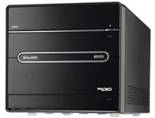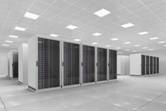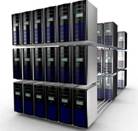What are the Types of Computer ?
Computers can be broadly classified by their speed and computing power.
S.No. |
Type |
Specifications |
1 |
PC (Personal Computer) |
It is a single user computer system having moderately powerful microprocessor |
2 |
Workstation |
It is also a single user computer system, similar to personal computer however a more powerful microprocessor has. |
3 |
Mini Computer |
It is a multi-user computer system, capable of supporting hundreds of users simultaneously. |
4 |
Main Frame |
It is a multi-user computer system, capable of supporting hundreds of users simultaneously. Software technology is different from minicomputer. |
5 |
Supercomputer |
It is an extremely fast computer, which can execute hundreds of millions of instructions per second. |
PC (Personal Computer)
 A PC can be defined as a small, relatively inexpensive computer designed for an individual user. PCs are based on the microprocessor technology that enables manufacturers to put an entire CPU on one chip.
A PC can be defined as a small, relatively inexpensive computer designed for an individual user. PCs are based on the microprocessor technology that enables manufacturers to put an entire CPU on one chip.
Workstation
 Workstation is a computer used for engineering applications, software development, and other such types of applications which require a moderate amount of computing power and relatively high quality graphics capabilities.
Workstation is a computer used for engineering applications, software development, and other such types of applications which require a moderate amount of computing power and relatively high quality graphics capabilities.
Workstations generally come with a large, high-resolution graphics screen, large amount of RAM, inbuilt network support, and a graphical user interface.
 Minicomputer
Minicomputer
It is a midsize multi-processing system capable of supporting up to 250 users simultaneously.
 Mainframe
Mainframe
Mainframe is very large in size and is an expensive computer capable of supporting hundreds or even thousands of users simultaneously.
Mainframe executes many programs concurrently and supports much simultaneous execution of programs.
Supercomputer
 Supercomputers are one of the fastest computers currently available. Supercomputers are very expensive and are employed for specialized applications that require immense amount of mathematical calculations (number crunching).
Supercomputers are one of the fastest computers currently available. Supercomputers are very expensive and are employed for specialized applications that require immense amount of mathematical calculations (number crunching).
For example, weather forecasting, scientific simulations, (animated) graphics, dynamic calculations, nuclear energy research, electronic design, and analysis of geological data


